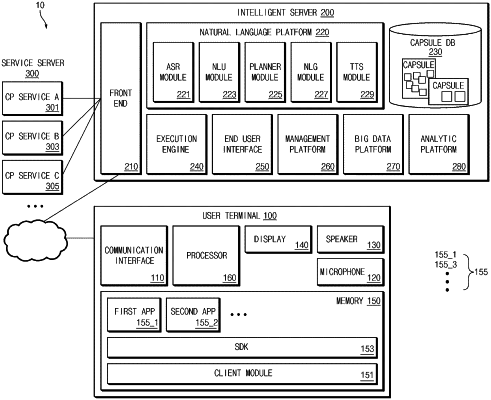| CPC G10L 15/183 (2013.01) [G06F 40/58 (2020.01); G10L 15/063 (2013.01); G10L 15/16 (2013.01); G10L 15/22 (2013.01); G10L 15/30 (2013.01)] | 18 Claims |

|
1. An electronic device comprising:
a communication circuit;
at least one processor; and
at least one memory storing a first natural language understanding (NLU) model including a first set of utterances in a first language and a first set of tags and intents associated with the first set of utterances,
wherein the memory stores instructions that, when executed, cause the at least one processor to:
receive a request for generating, through the communication circuit, a second NLU model in a second language different from the first language from an external user device;
translate the first set of utterances into a second set of utterances in the second language by using a neural machine translation (NMT) model;
determine, based on the first NLU model, a second set of tags or intents associated with the second set of utterances, wherein the second set of tags or intents corresponds to the first set of tags and intents;
provide a user interface for receiving, through the communication circuit, at least one user input for fixing at least one from among the second set of utterances or the second set of tags or intents to the external user device;
receive the at least one user input from the external user device;
generate a third set of utterances and a third set of tags or intents based on the at least one user input and the fixed at least one of the second set of utterances or the second set of tags or intents; and
generate the second NLU model including the third set of utterances and the third set of tags or intents.
|